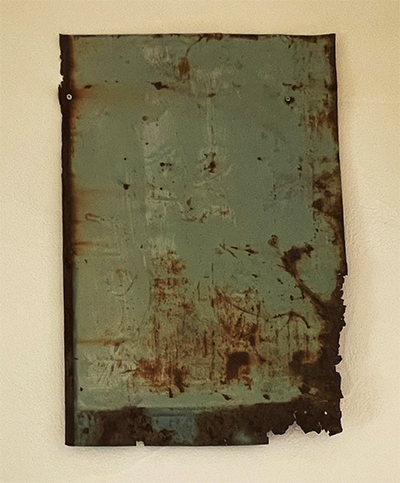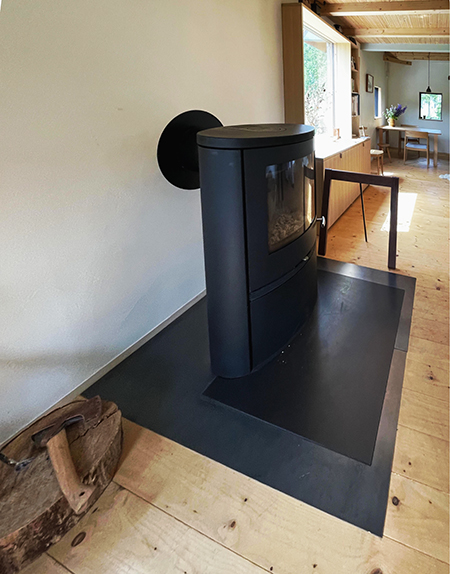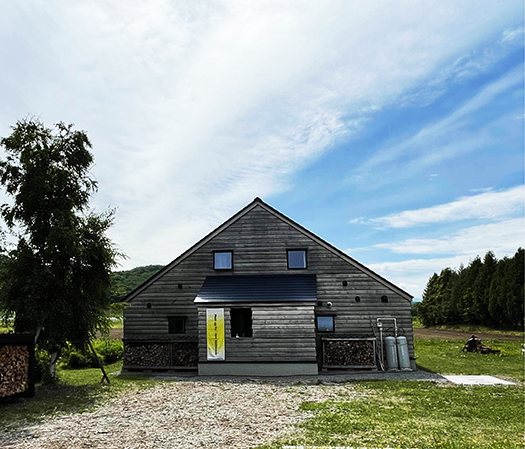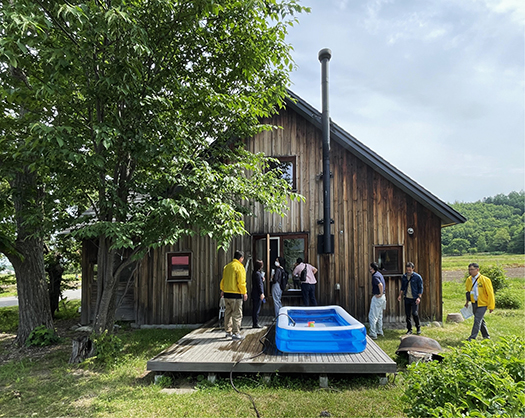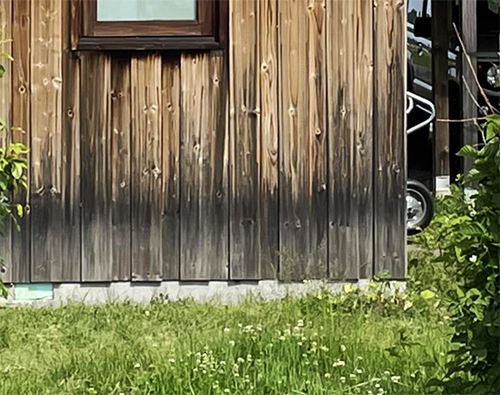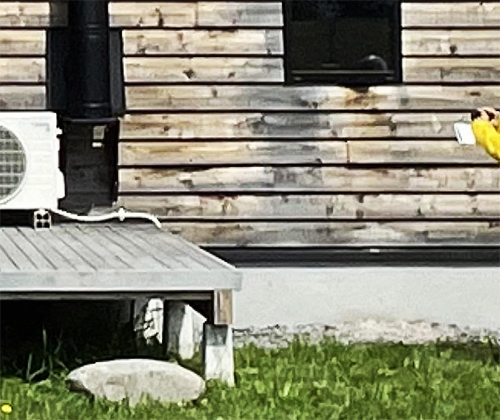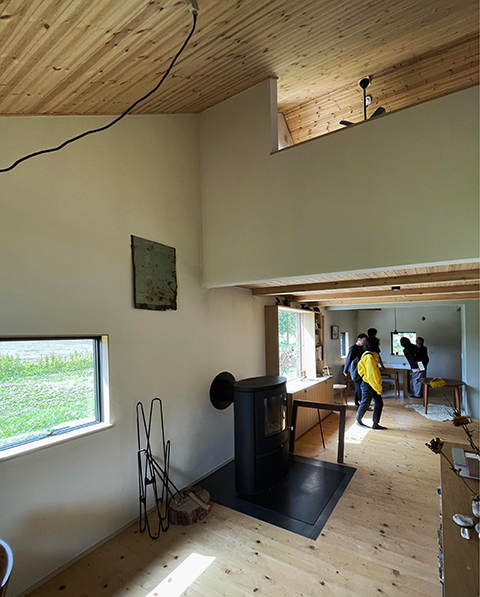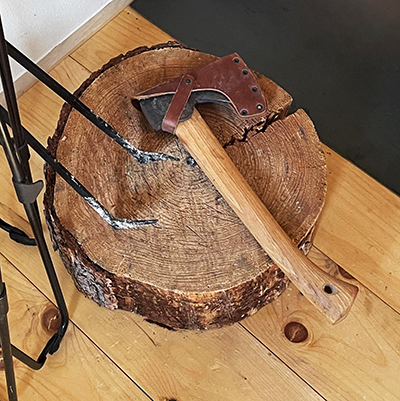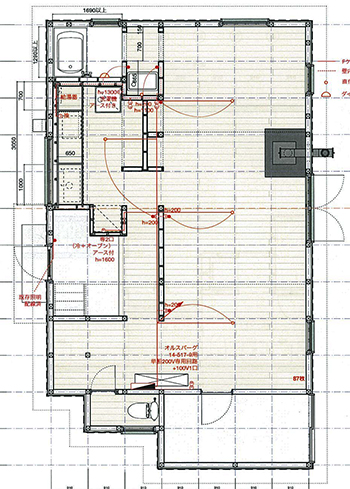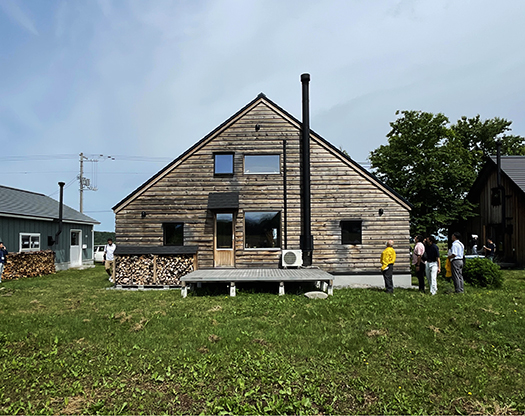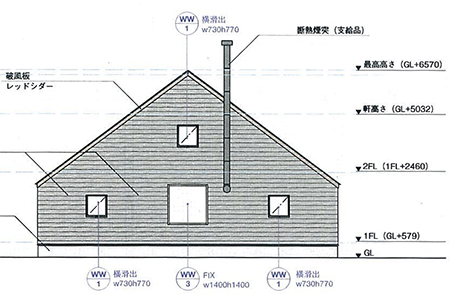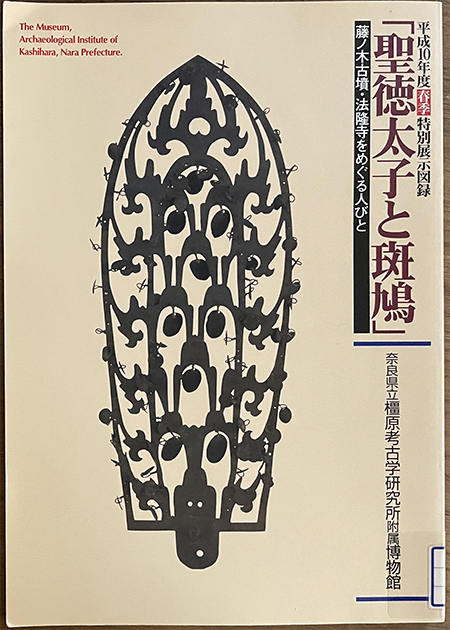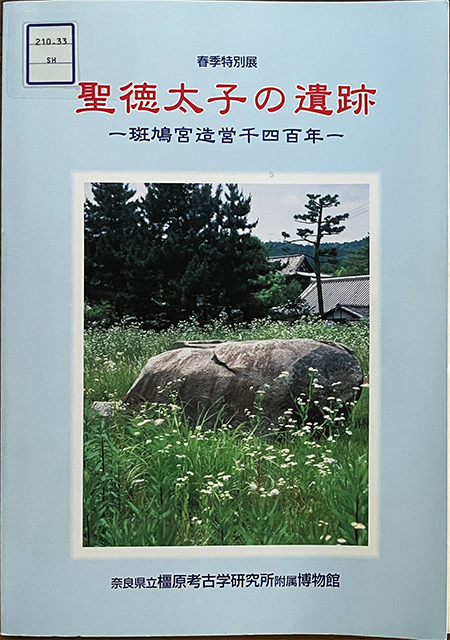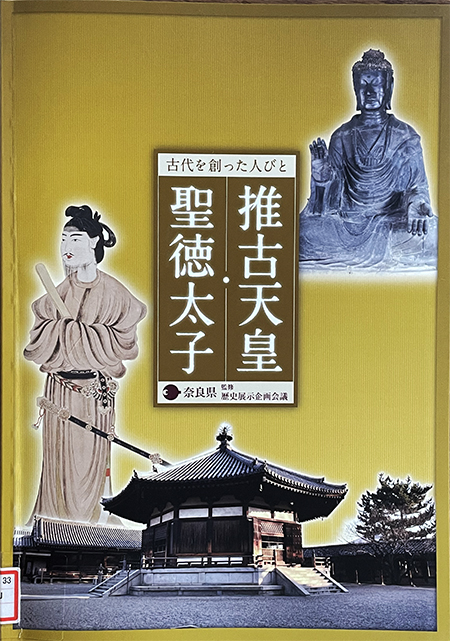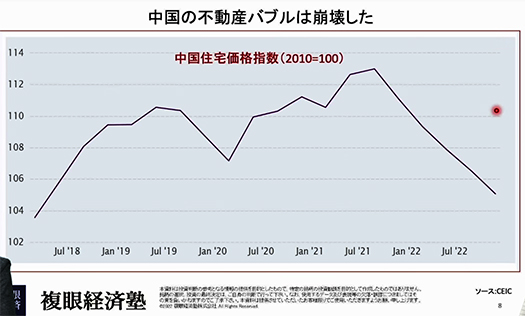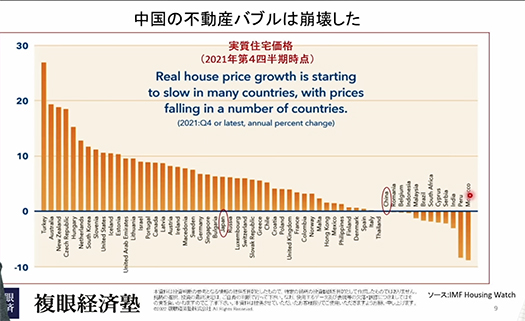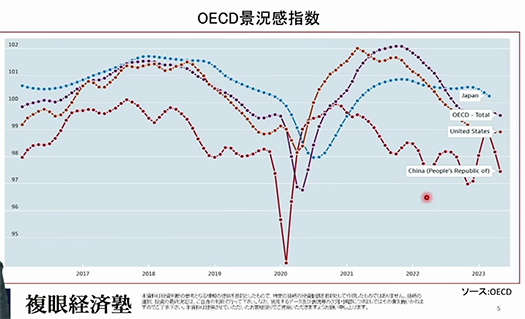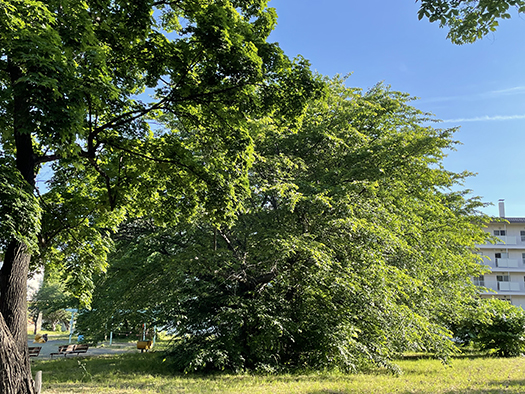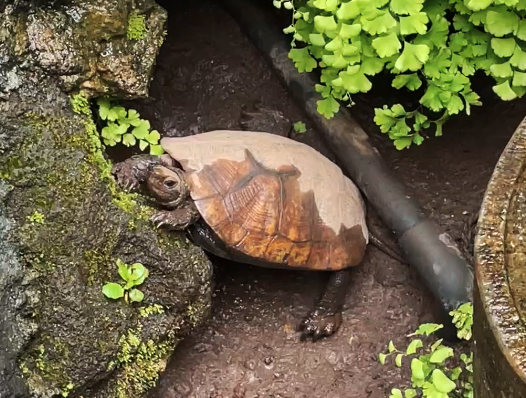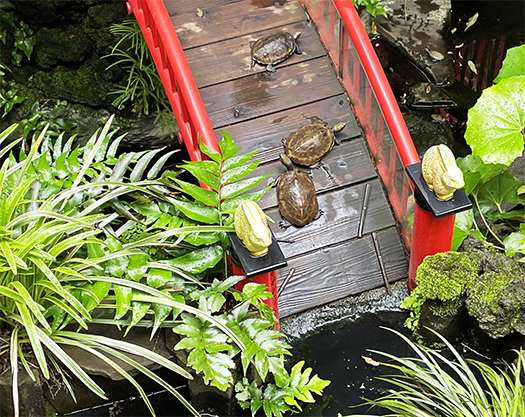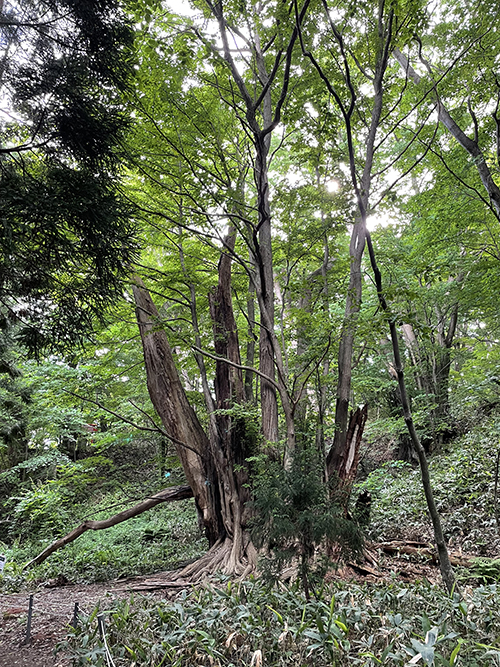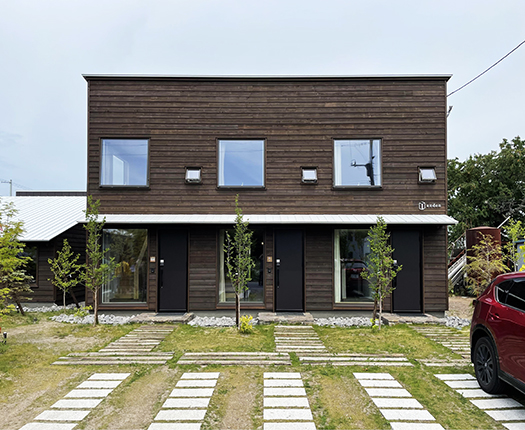
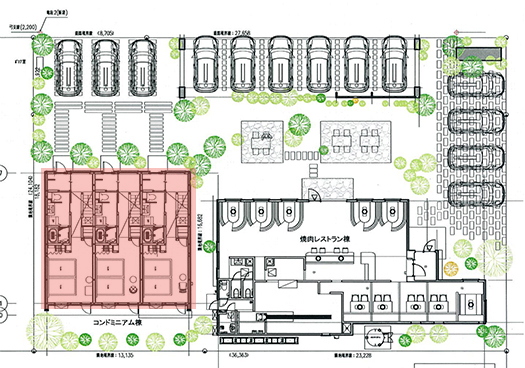
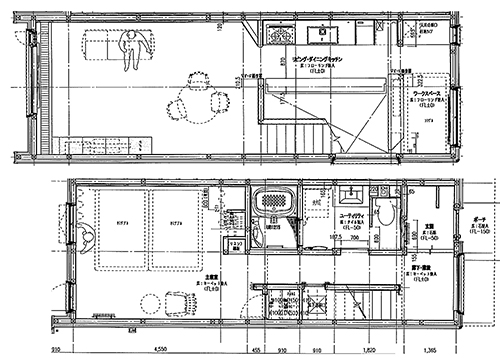
最盛期570万人から現在515万人と人口減少に直面している北海道。ふつうに考えれば住宅建築は大きく落ち込んでいく産業と言えるのでしょうが、一方で世界有数のリゾート地域として欧米資本などが市場参入してきていることで、観光などの建築需要が増大しているとみることができる。
感染症での閉塞状況からようやく人流が活性化してきて、インバウンドが盛り上がってきているなかで、こういった建築のあらたな需要というものも活性化してくるのだろう。単純な「戸建て新築需要」だけでは把握できない状況があるのだと思います。
とくにわたしは最近、ニセコ地域などを訪れることが増えているのですが、活発な戸建てサイズの滞在型コンドミニアム建築の活況ぶりに驚かされている次第。そういった需要は取材した東川でも非常に増えてきている。日本人的な常識からは観光=ホテル宿泊という集中豪雨型が旧来常識ですが、世界のリゾート地域では長期滞在型の宿泊建築の需要が大きい。ニセコなどでは世界有数の雪質をめがけて1週間以上の滞在でゆっくり、たっぷり、自由気ままに楽しむスタイルが主流。
そうすると宿泊施設ではより居住環境の自由度の高いコンドミニアム型の建築需要が高まる。建築工務店などにしてみると従来の戸建て注文住宅とはまた違った建築需要と考えられる。で、こうした建築の実際的な統計はまだ十分に把握されてきていないのではないか。戸建て住宅が「減ってきている」のは事実だとしても、こういった戸建て建築とほぼ同様の建築需要も存在している。実際、北海道では非常に活発。
今後の高齢者マーケットを考えると、2地点居住建築需要としてもあり得る。
今回の新住協北海道の視察でも、戸建て住宅が2軒と写真のような焼き肉レストラン+宿泊コンドミニアムという木造建築事例が1軒と訪問した次第。建築としてはまったく「住宅サイズ」。観光需要としても宿泊とレストラン機能が近接一体化していて、利便性は高い。
配置図で見るとコンドミニアム棟の方は6間×6間のコスト的にもきわめて合理的な建築で、それが3分割されて2間×6間の2階建て24坪という「ちょうどいい」各戸ごとの面積空間が提供されていた。あ、実際には階段部分の吹き抜けがあるので床面積的には20坪くらいなのでしょう。
で、コンドミニアムという建築形式にはこれからの「高齢化夫婦ライフスタイル」の基本形がきれいに備わっているようにも思えた。ピンピンコロリを想定すれば階段はむしろ健康維持装置とも思えるし。
高齢化社会では「断捨離」が加速化していくと思っているので、各スペースの「必要にして十分」という建築思想的な姿勢にピッタリ感を強く抱かされたのですね。ということでこの項、明日以降につづく。
English version⬇
[Resort Construction Increasing in Hokkaido, “2Ken x 6Ken” Version – 1
Condominiums are not counted in detached housing statistics. Active demand in Hokkaido. Are we headed for an aging population demand for 2-point residences? ・・・・.
Hokkaido is facing a population decline from 5.7 million at its peak to 5.15 million today. While residential construction is an industry that would normally be considered to be in decline, the entry of Western capital into the market as one of the world’s leading resort areas has led to an increase in demand for construction for tourism and other purposes.
As the flow of people is finally revitalized after the blockage caused by infectious diseases, and inbound tourism is on the rise, this kind of new demand for construction will also be stimulated. I think there is a situation that cannot be grasped by simply looking at “demand for new detached houses.
In particular, I have been visiting the Niseko area more and more recently, and I have been surprised at how active the construction of detached condominiums has been. Such demand is also increasing in Higashikawa, where I visited. Japanese people’s conventional wisdom is that sightseeing is a form of tourism that requires hotel accommodations, but in resort areas around the world, there is a great demand for long-term stay accommodations. In Niseko, for example, the mainstream style is to stay for a week or more to enjoy the world’s best snow quality slowly, fully, and freely.
This will increase the demand for condominium-type accommodations with a high degree of freedom in the living environment. For construction firms, this is a different type of construction demand from that of conventional custom-built detached houses. However, the actual statistics for this type of construction are not yet fully understood. Even if it is true that the number of detached houses is “decreasing,” there is still a demand for construction similar to that of detached houses. In fact, it is very active in Hokkaido.
Considering the future market for the elderly, it is possible that this could be a demand for two-story residential construction.
During the Shinjyukyo Hokkaido inspection this time, we visited two detached houses and a wooden building consisting of a yakiniku restaurant and a lodging condominium, as shown in the photo. The architecture is completely “house-sized. The building is convenient for tourists because it combines lodging and restaurant functions in close proximity.
The condominium building is a very cost-effective 6K x 6K building, which is divided into three parts to provide each unit with a “just right” area of 24 tsubos per unit in a 2K x 6K two-story building. Oh, actually, the floor area is probably about 20 tsubo because there is a stairwell in the stairwell.
The condominium architectural style seems to have the basic form of the “aging couple lifestyle” that is expected to be realized in the future. If we assume that we will be able to live a long and healthy life, the stairway seems to be a health maintenance device.
Since I believe that “decluttering” will accelerate in an aging society, I was strongly impressed by the architectural philosophy of “necessary and sufficient” in each space. I will continue this section tomorrow.
Posted on 6月 29th, 2023 by 三木 奎吾
Filed under: 住宅マーケティング | No Comments »


